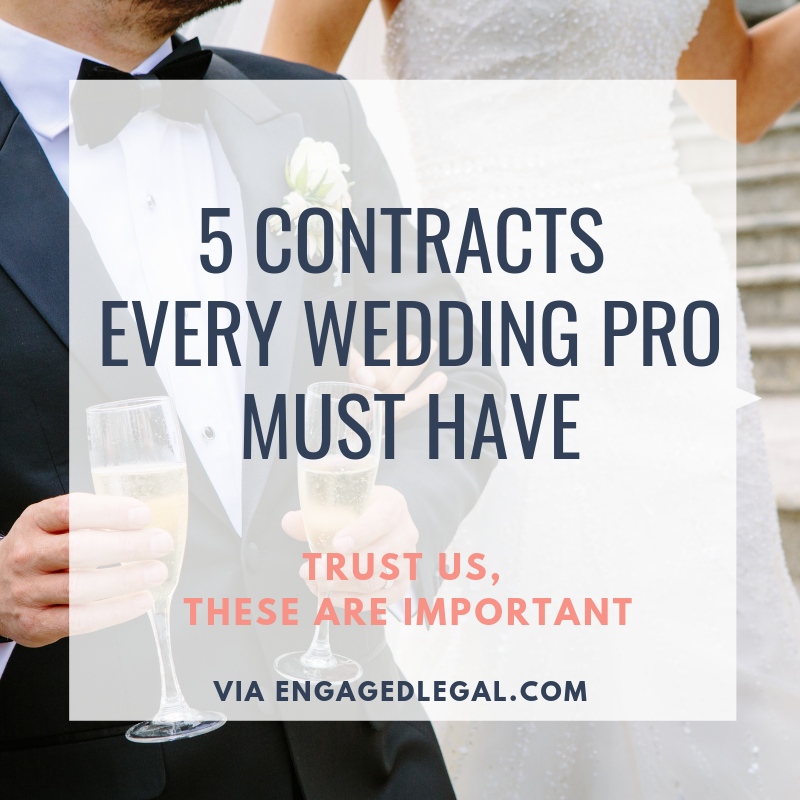What is a DMCA Takedown or a "Copyright Takedown Notice"?
/Wedding pros, especially photographers, know that protecting intellectual property is of utmost importance.
IP encompasses everything from photographs, to video, to notes, to client guides, to anything else you create or compose— even your brand! And one of the most effective tools for copyright holders is the Digital Millennium Copyright Act (DMCA) takedown notice, sometimes referred to as a “Copyright Takedown.”
But what is it? And how does it help— or hurt— Wedding Pros?
What is a DMCA Takedown?
A DMCA takedown is a legal process established by the Digital Millennium Copyright Act, (hence “DMCA”) a federal law enacted in 1998. Its goal was to provide copyright holders with a mechanism to swiftly remove infringing content from online platforms and websites. By submitting a sworn statement, a copyright owner (or their authorized representative) can issue a takedown notice to the platform hosting the infringing content, and the platform must remove the offending content (or have a reason not to).
The DMCA takedown notice process serves as a vital tool to combat copyright infringement and safeguard copyrighted works online. By issuing takedown notices, copyright owners can remove infringing material, protect their rights and ensure that their work is used in accordance with copyright law.
Purpose and Benefits of DMCA Takedown Notices
The primary purpose of a DMCA takedown notice is to protect the rights of copyright holders in the “wild wild west” of the internet. By issuing a takedown notice, copyright owners can request the removal of infringing material from websites, social media platforms, search engines, or any other online platforms, especially those that permit user generated content. By providing this mechanism to prevent unauthorized use, reproduction, distribution, or display of copyrighted works, including text, images, videos, and audio, the platforms also avoid liability themselves under Safe Harbor Provisions (below).
2.2 Legal Compliance and Safe Harbor Provision:
Typically, copyright violations are a “strict liability” offense: it doesn’t matter if the website knew it was infringing or not. When infringing content is found on a website, that website owner/ operator is liable. However, this is extremely hard to monitor on websites and apps where users can upload content. It’s nearly impossible to "check every single piece of content uploaded to a place like Facebook or Youtube.
Thus, the DMCA “Safe Harbor” was born.
Through this clause, online service providers, such as hosting companies, social media platforms, and search engines, can avoid liability for hosting infringing content if they promptly respond to notices alleging that content is infringing.. By complying with DMCA takedown requests, these platforms demonstrate their commitment to copyright protection and ensure legal compliance, make things easier for copyright holders, and keep their own best interest in play as they avoid potential liability for infringement.
The DMCA Takedown Process
To initiate a DMCA takedown, copyright holders or their representatives must submit a formal takedown notice to the relevant online service provider. The notice typically includes the following components:
Identification of the copyrighted work(s) being infringed.
Identification of the infringing material, including specific URLs or links.
Contact information of the copyright owner or authorized agent.
A statement confirming the good faith belief that the use of the copyrighted material is not authorized.
A statement confirming the accuracy of the information provided.
A physical or electronic signature of the copyright owner or authorized agent.
It is important to remember that these are SWORN statements, so untruths amount to perjury.
The Platform’s Response and Takedown:
Once the online service provider receives a valid* takedown notice, they are obligated to promptly investigate and take appropriate action. This may involve removing or disabling access to the infringing content, notifying the alleged infringer, and providing an opportunity to respond with a counter-notice if the alleged infringer believe the takedown was in error. The service provider must adhere to specific timeframes and procedures outlined in the DMCA in order to maintain Safe Harbor protections.
*”Valid” means accurate and complete. Partial takedown notices are routinely discarded.
What are Limitations of the DMCA?
The DMCA is not a panacea— it’s a tool in your toolbox to protect your IP. Wedding Pros need to know that the limitations of the DMCA are often the subject of ongoing debates and discussions. Efforts to address these limitations and improve the balance between copyright protection and the interests of content creators, users, and online platforms continue to evolve Here are a few key limitations of the DMCA as it exists now:
Overly Broad Safe Harbor Protection: As noted above, the safe harbor provision of the DMCA protects online service providers from liability for copyright infringement committed by their users. However, some argue that the safe harbor protection is too broad and may shield platforms that have knowledge of infringing activity but fail to take appropriate action (coughCLOUDFLAREcough). Critics argue that this can result in a lack of accountability and actually enable ongoing infringement.
Ineffective against Foreign Infringers: The DMCA primarily applies to online service providers based in the United States. It may be challenging to enforce takedown notices against infringing content hosted on foreign platforms or websites outside U.S. jurisdiction. This limitation makes it difficult for copyright holders to effectively protect their works against international infringement without a substantial investment of time and money.
Abuse of the Takedown Process: The DMCA takedown process can be subject to abuse by both copyright holders and infringers.
Some copyright holders may issue takedown notices without proper evaluation, leading to the removal of non-infringing content.
Conversely, malicious actors may misuse the process to stifle free speech or target legitimate content, resulting in censorship or overreach of IP rights.
Fair Use Ambiguity: The DMCA does not explicitly define or address the concept of fair use, which allows limited use of copyrighted material without permission. Determining whether a specific use qualifies as fair use can be subjective and may lead to disputes between copyright holders and users (heck, there’s ambiguity even at the Supreme Court!). This lack of clarity can make it challenging for content creators and users to understand their rights and obligations.
***
If you encounter copyright infringement, you can look for the host platform’s DMCA takedown page, or you can consult with legal professionals to navigate the DMCA takedown process.



















